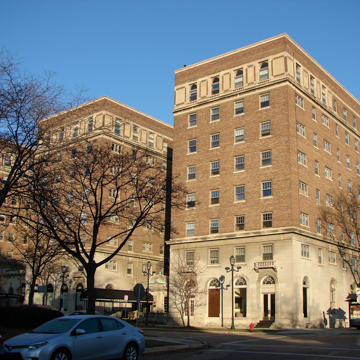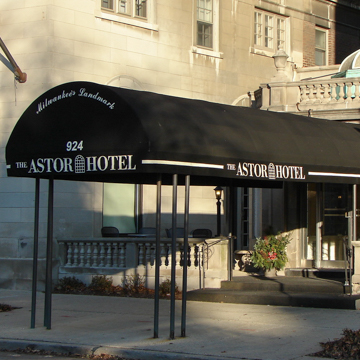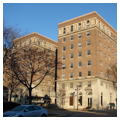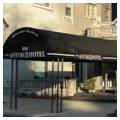Stepping into the Astor Hotel’s domed entrance pavilion with its stained glass skylight, chandeliers, and painted wood paneling is like traveling back to the elegant 1920s. The Astor was the first of several fashionable residential hotels built after World War I in this neighborhood, with its lakefront views, downtown location, and proximity to the Prospect Avenue “Gold Coast.” Hotel tycoon Walter Schroeder, who also owned Milwaukee’s Schroeder (MI52) and other Wisconsin hotels and built Madison’s Hotel Loraine, lived here in the Astor. The original, eastern part of the hotel was U-shaped, with a one-story lobby within the U. In 1925, an L-shaped section was added on the west, creating the overall form of an E. The design shows the base-shaft-capital scheme common to tall office buildings. The hotel’s lower floors are clad in smooth limestone, the next five floors are clad in plain brick, and the top story, articulated by a stringcourse, has round-arched windows and stone panels inset with brick highlights.
In the prosperous decade after World War I, residential hotels like the Astor promised comfortable and fashionable living for wealthy retirees and affluent professionals. These hotels offered the prestige of a downtown address and provided housecleaning and dining room services, eliminating the need for residents to hire servants or perform their chores. The ground floor of the Astor earned income for the owner, accommodating a Rolls Royce showroom and an Oriental rug shop, appropriate for the hotel’s wealthy residents. The Astor still accommodates long- and short-term residents. The nearby Knicker-bocker (1929–30, Rosmont and Wierdsma) at 1028 E. Juneau Avenue was also a residential hotel until converted to condominiums in the 1970s.





















